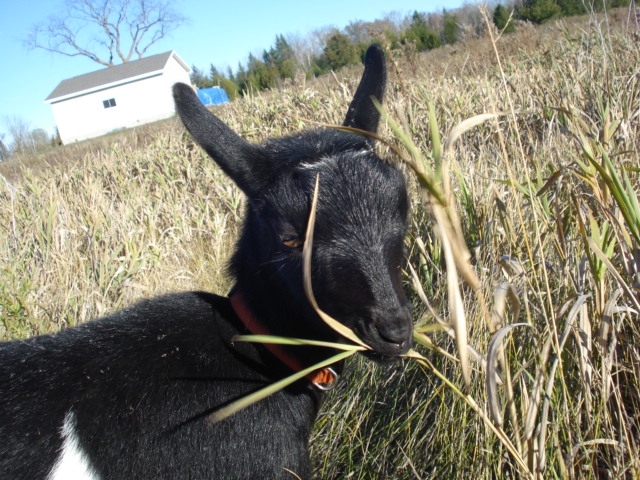I know of a lot of people out there are frightened by snakes. I, however, love snakes. I find them very awesome and fascinating critters. And they have a very valuable purpose in the ecosystem, so even though they may be 'gross' or 'scary' to some people, they shouldn't be harmed. If you don't like snakes, and stumble upon one on a hike, please just let it be, go around or turn back. I have personally sidestepped a lazy rattlesnake sunning itself when I was hiking in South Dakota I wish I'd taken a picture! Sadly, too many people out there would have gladly bashed in the rattlesnake's head, out of panic and fear, even without the snake showing any aggression.
Anyway, I took some pictures of snakes I've stumbled across on the property. Like I said, I really like them. I handle them long enough to take a few pictures, then let them go where I found them.
Pretty and flashy!
This is a juvenile Northern Red Bellied Snake (
Storeria occipitomaculata occipitomaculata).
This little guy was tiny. Thinner than a #2 pencil. Probably a very new
hatchling. If you see the snake from the top, it is quite unremarkable.
But flip them over, and you can see why they are so named! The red
orange on their bellies is almost neon!
The snakes eat
snails, slugs, and other soft invertebrates, so they are very
beneficial to gardener by helping take care of a pesky slug infestation.
Full grown specimens top out a 16 inches, with most staying much
smaller. They're hardly a threat to people, with very small jaws and
tiny teeth. They may try and defend themselves with a foul smelling musk
from their cloaca.
Smile!
Rawr! I tiny and scary!
Next up is a little snake most everyone knows about, the garter snake. In this case, this is an Eastern Garter Snake (
Thamnophis sirtalis). A very fetching snake, with their almost checkboard patterning.
Garter snakes are also zero threat to humans. And boy, when they're caught they do excrete copius amounts of musk! Even if they try and chew on you, they don't leave much of a mark at all. They relish eating small amphibians, invertebrates, and the occasional mouse (for the larger specimens who can catch them). These guys are survivors though. They can be found just about everywhere, so at least they aren't in danger of being wiped out.
Look!
The last snake to be featured is the Western Fox Snake (
Elaphe vulpina), also known as a Pine Snake locally. This snake is gorgeous. The pattern on the belly is so pretty.
This snake has a hard time because it looks like snakes who might be venemous. The adult's head darkens to a rich, copper color. And people immediately think "copperhead!" and bash in this harmless snake. The blochy color pattern also, for some reason, screams "dangerous!". Yes, other venomous snakes do have this patterning, but they either A: do not occur in Michigan, or B: rare and considered a species of concern (this is the massasauga rattlesnake, who is incredibly shy and would rather flee than bite, so bites do not happen very often).
So you can see how this species of snake has it rough. And in fact, they are great to have around your farm or home. Why? They LOVE eating rodents. Rodents are their favorite food item. I'd much rather have a few of these snakes floating around than mice trying to get into the house or animal feed (though I do keep it up in metal cans).
So snakes. They're unique, and a benefit to you and your land. I understand if you don't like them, but even if you don't, they would rather not bother you, a big scary predator.






















































